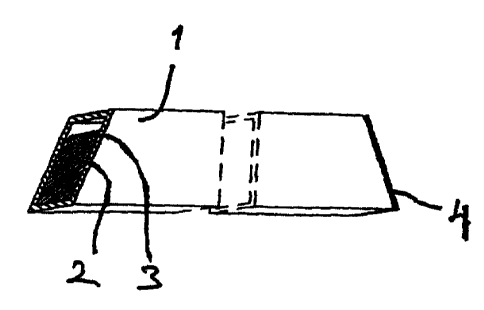Some of the information on this Web page has been provided by external sources. The Government of Canada is not responsible for the accuracy, reliability or currency of the information supplied by external sources. Users wishing to rely upon this information should consult directly with the source of the information. Content provided by external sources is not subject to official languages, privacy and accessibility requirements.
Any discrepancies in the text and image of the Claims and Abstract are due to differing posting times. Text of the Claims and Abstract are posted:
| (12) Patent: | (11) CA 2427396 |
|---|---|
| (54) English Title: | METHOD FOR JOINING A JACKET PART TO A CORE PART |
| (54) French Title: | PROCEDE D'ASSEMBLAGE D'UNE PARTIE DE REVETEMENT A UNE PARTIE CENTRALE |
| Status: | Expired |
| (51) International Patent Classification (IPC): |
|
|---|---|
| (72) Inventors : |
|
| (73) Owners : |
|
| (71) Applicants : |
|
| (74) Agent: | NORTON ROSE FULBRIGHT CANADA LLP/S.E.N.C.R.L., S.R.L. |
| (74) Associate agent: | |
| (45) Issued: | 2009-09-15 |
| (86) PCT Filing Date: | 2001-11-13 |
| (87) Open to Public Inspection: | 2002-05-23 |
| Examination requested: | 2006-11-08 |
| Availability of licence: | N/A |
| (25) Language of filing: | English |
| Patent Cooperation Treaty (PCT): | Yes |
|---|---|
| (86) PCT Filing Number: | PCT/FI2001/000984 |
| (87) International Publication Number: | WO2002/040749 |
| (85) National Entry: | 2003-04-30 |
| (30) Application Priority Data: | ||||||
|---|---|---|---|---|---|---|
|
A method for joining a highly electroconductive core element that mainly
consists
of copper to a jacket element made of refined steel, the method comprising
inserting the electroconductive core element and a joining element that
consists
mainly of tin into the jacket element, and thermally treating a juncture area
of the
elements to be joined at a temperature sufficient to create a metallurgical
joint
from tin bronze between the electroconductive core element and the refined-
steel
jacket element.
L'invention porte sur un procédé visant à assembler une partie centrale (2) hautement électroconductrice à une partie de revêtement en acier raffiné (1). Dans ce procédé, une partie centrale (2) hautement électroconductrice telle qu'une barre de cuivre et un composant de raccordement (3) sont placés à l'intérieur d'un revêtement (1) plus pauvre en électroconductivité et sont chauffés et traités au moins au niveau de l'assemblage des pièces de façon à former un lien métallurgique entre la partie centrale (2) électroconductrice et le revêtement d'acier raffiné.
Note: Claims are shown in the official language in which they were submitted.
Note: Descriptions are shown in the official language in which they were submitted.

For a clearer understanding of the status of the application/patent presented on this page, the site Disclaimer , as well as the definitions for Patent , Administrative Status , Maintenance Fee and Payment History should be consulted.
| Title | Date |
|---|---|
| Forecasted Issue Date | 2009-09-15 |
| (86) PCT Filing Date | 2001-11-13 |
| (87) PCT Publication Date | 2002-05-23 |
| (85) National Entry | 2003-04-30 |
| Examination Requested | 2006-11-08 |
| (45) Issued | 2009-09-15 |
| Expired | 2021-11-15 |
There is no abandonment history.
Note: Records showing the ownership history in alphabetical order.
| Current Owners on Record |
|---|
| OUTOTEC OYJ |
| Past Owners on Record |
|---|
| HALMINEN, VEIJO |
| KIVISTO, TUOMO |
| OUTOKUMPU OYJ |
| POLVI, VEIKKO |